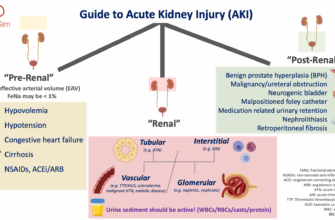In the vast scientific landscape of Siberia, a quiet revolution is underway that promises to fundamentally change how we assess the integrity of our medications and cosmetic products. Scientists at the Siberian Federal University (SFU) have introduced a groundbreaking method involving a “spy molecule” designed to reveal the hidden health of protein-based substances, ensuring both safety and efficacy for consumers.
The Fragile Nature of Proteins: A Molecular Key Problem
At the heart of many modern pharmaceuticals and high-end cosmetics lie proteins – complex macromolecules essential for biological function. Chemically, proteins are intricate chains of amino acids, but their true power lies in their precise three-dimensional folding, often likened to a key`s unique shape designed to fit a specific lock. This intricate structure dictates their biological properties, from transporting vital substances to neutralizing harmful bacteria.
However, these molecular keys are surprisingly fragile. Exposure to heat, light, improper storage, or even the passage of time can cause a protein to “unfold” or “bend,” disrupting its delicate spatial structure. Once compromised, a protein ceases to perform its intended function, becoming, as Professor Evgenia Slyusareva of SFU`s Photonics and Laser Technologies Department aptly puts it, like a “bent key” trying to open a lock. The danger extends beyond mere ineffectiveness; such degraded molecules can potentially “break the lock,” leading to adverse effects in the body.
Introducing the Molecular Sentinel: Fluorescein`s New Role
To combat this invisible degradation, SFU researchers have engineered a novel system that acts as an early warning mechanism. Their innovation involves a specially modified “spy molecule,” fluorescein, which is robustly “stitched” onto the surface of proteins using a strong covalent chemical bond. This isn`t a casual attachment; it’s a permanent fixture, like “a button securely sewn onto a jacket,” ensuring the probe remains in place without altering the protein`s original, functional structure.
“We have developed a method to reliably attach a marker to the surface of various protein types: transport, antibacterial, and even those responsible for the luminescence of certain bacteria,” explained Professor Slyusareva. “If a biologically active molecule begins to degrade, this spy molecule changes its light emission, signaling the impending failure.”
The brilliance of this “molecular spy” lies in its sensitivity to subtle changes in the protein`s physical properties. When a protein`s structure is compromised, the fluorescein molecule reacts by altering its luminescence. Scientists can then detect these changes by observing several key parameters, including the brightness and “color” of the emitted light. It`s a precise, non-invasive way to monitor molecular integrity from the outside.
From Lab to Life: Broader Implications for Quality and Safety
Currently, this sophisticated diagnostic test is conducted in vitro, meaning in a test tube, providing a critical quality control step before products ever reach the consumer. The implications are far-reaching. Imagine a world where every protein-based drug, vaccine, or cosmetic product could be reliably checked for molecular integrity at various stages of its lifecycle, from manufacturing to pharmacy shelves. This technology could significantly reduce the risk of ineffective treatments or adverse reactions caused by degraded products, leading to improved patient outcomes and enhanced consumer confidence.
The versatility of the method is also noteworthy. The SFU team has successfully demonstrated its applicability across diverse protein types, showcasing its potential as a universal tool for quality assessment in biotechnology and pharmacology. And, with a touch of scientific foresight, they are already looking beyond current applications.
The Future of Molecular Espionage: Beyond Pharmaceuticals
The researchers envision expanding the “spy molecule`s” repertoire. Their future plans involve adapting this marker to attach to other complex biological molecules and even larger structural formations, such as individual cancer cells. This forward-thinking approach hints at a future where such molecular sentinels could play a pivotal role not just in quality control, but potentially in diagnostics, targeted drug delivery, or even fundamental biological research.
The work, supported by the Ministry of Science and Higher Education of the Russian Federation, and published in the esteemed journal Biophysical Chemistry, underscores the continuous pursuit of scientific excellence. It`s a reminder that sometimes, the smallest discoveries, like a well-placed molecular spy, can have the largest impact on human well-being and the reliability of the products we rely on every day.







